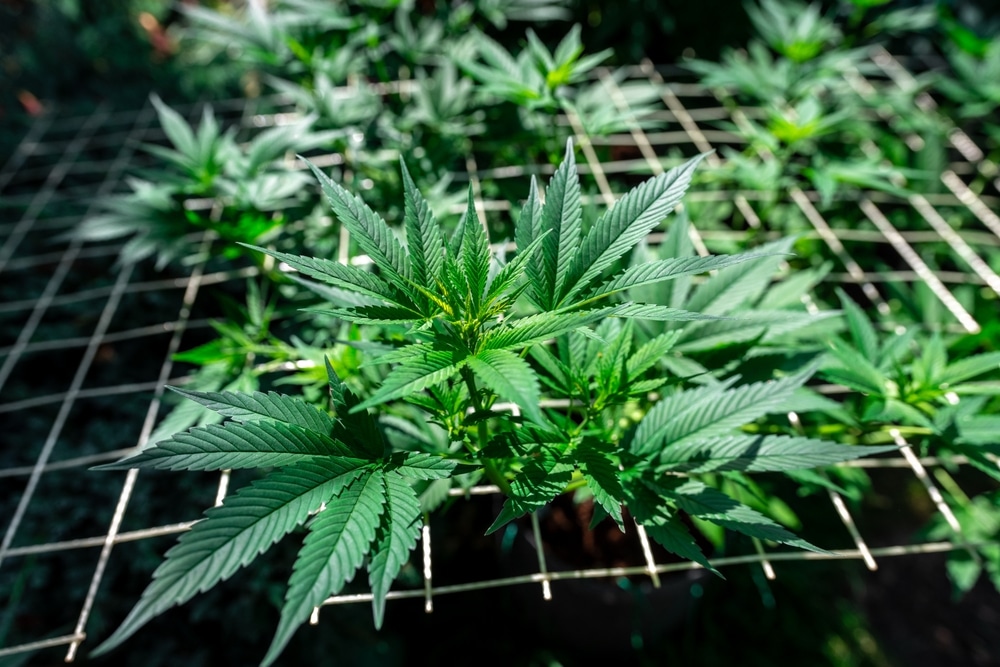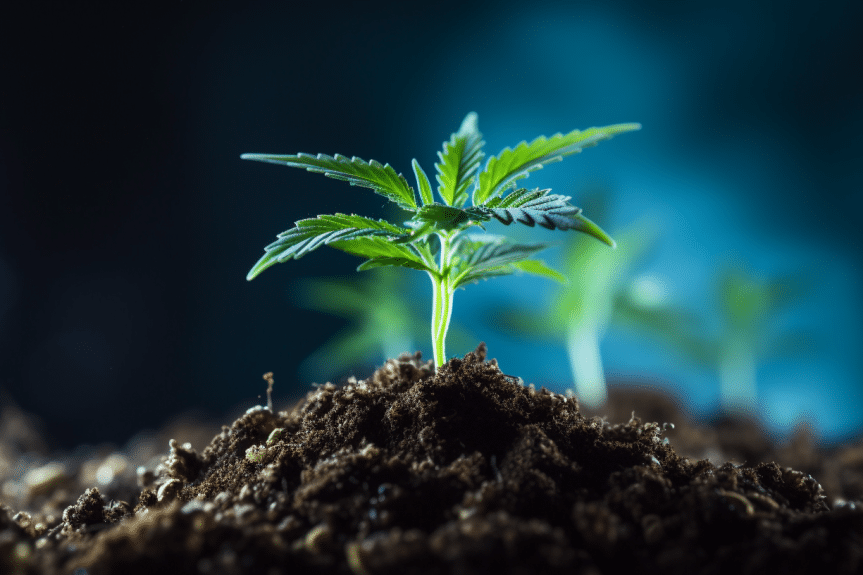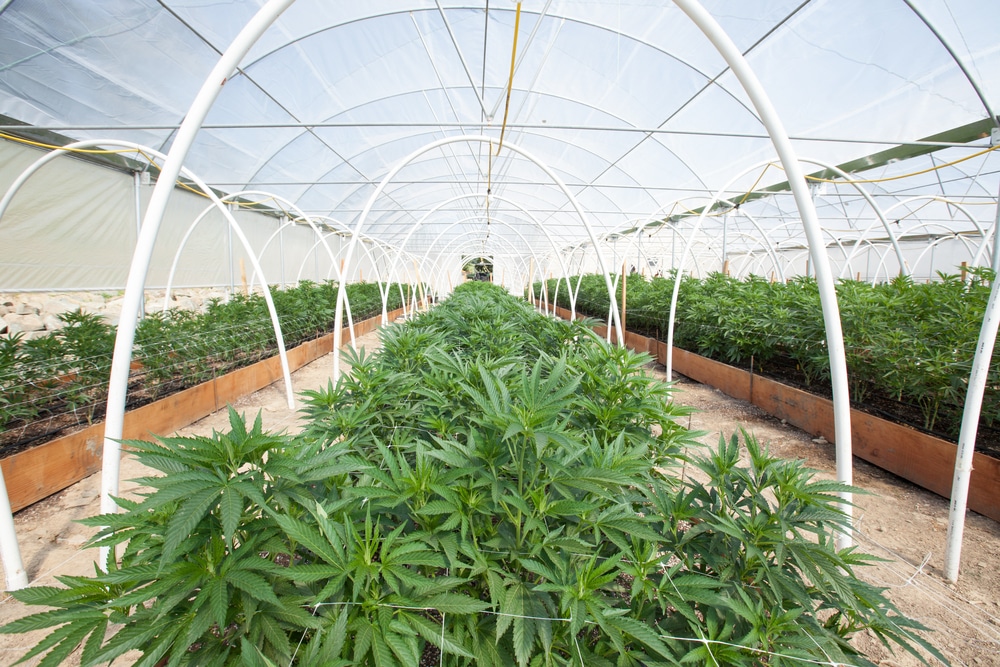No products in the cart.
Marijuana Education
The All-In-One ScrOG (Screen of Green) Guide
The Screen of Green (ScrOG) is an excellent technique for achieving maximum yields from a limited grow area. This method is perfect for cultivators with a small garden, as it creates more bud sites and offers bigger harvests.
ScrOGing is ideal for home cultivators restricted by state laws that only permit them to grow a few cannabis plants. Read on to learn more about the technique, its benefits, and how to set it up, step-by-step.
Let’s dive in.
What is the Screen of Green method?
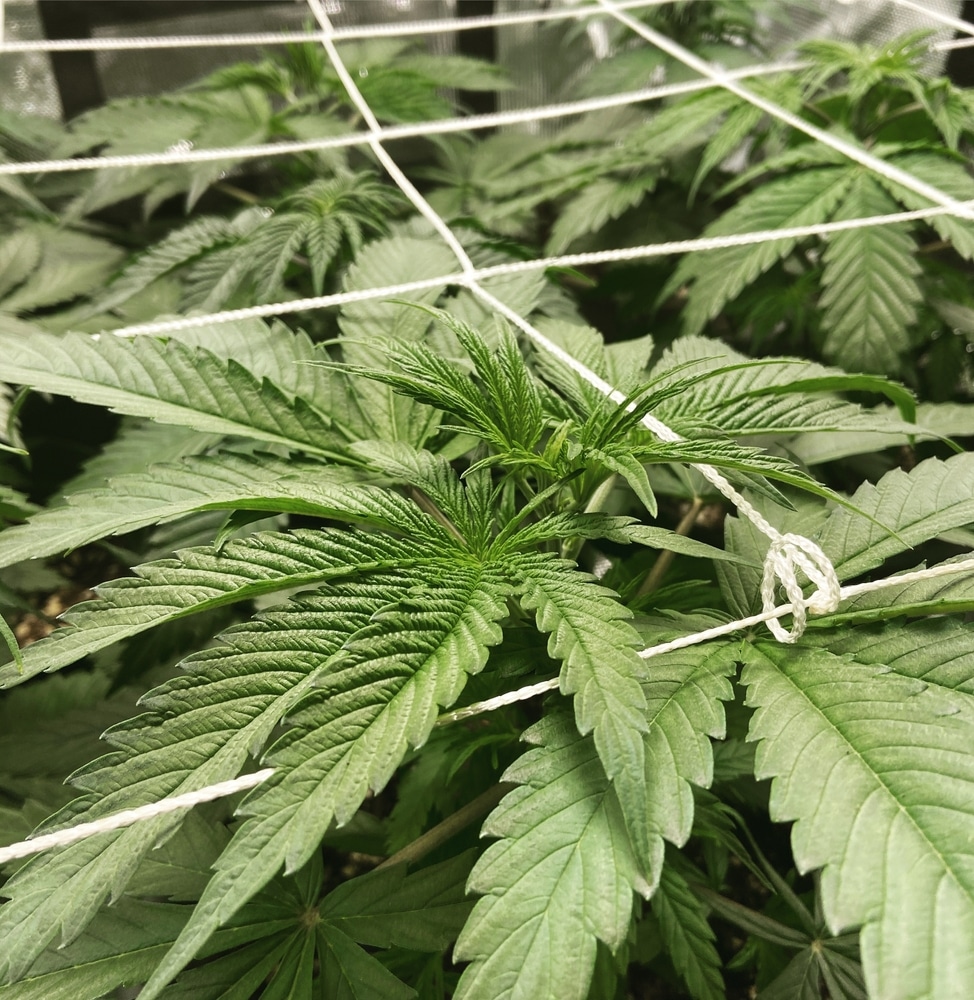
It’s every grower’s goal to produce bigger cannabis buds, and knowing how to implement the ScrOG low-stress training method is essential.
Cannabis plants develop upwards, and the central stalk is the dominant growth site. The main cola receives the most light, absorbing more nutrients and growing larger buds than the other sites.
A ScrOG setup encourages lateral growth instead of apical dominance. You cut the central stem, producing several bud sites instead of only one main cola. The technique uses a horizontal grid system to maximize the extended nodes’ light exposure for optimal nug development.
Many growers ask about the difference between the Screen of Green vs. the Sea of Green (SOG). While the latter method also boosts yields, it uses more plants (up to 40) and focuses on developing one central cola each. ScrOG maximizes bud production with only a few crops.
Some marijuana strains are better suited to one technique than the other based on height. Sativa-heavy cultivars typically adapt to a ScrOG setup, while SOG tends to work better for indica-leaning strains. As a result, it’s essential to know how tall your plants will be beforehand.
How ScrOGing works
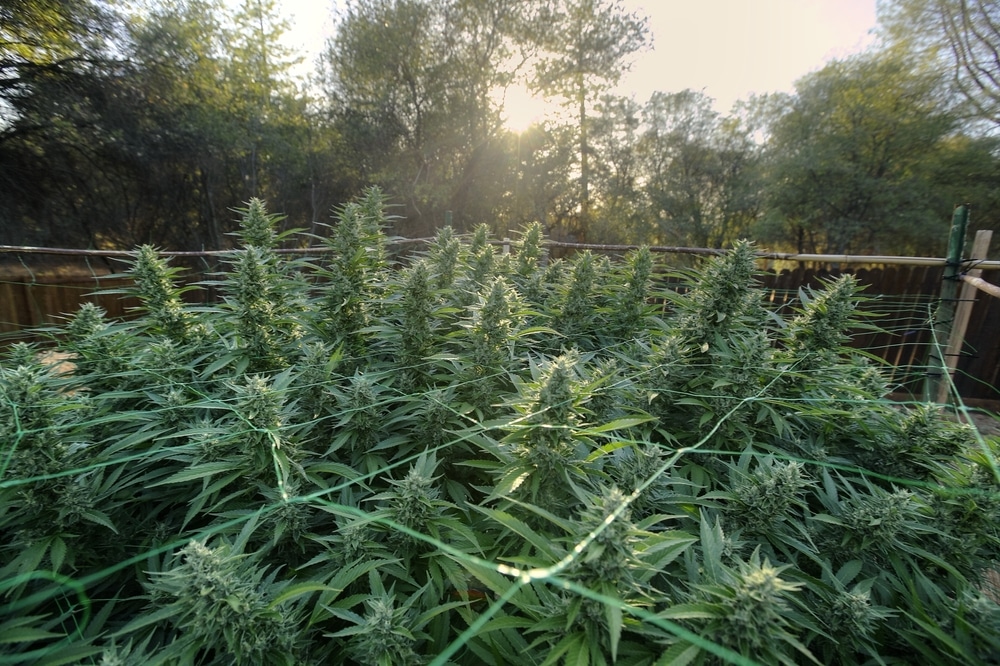
ScrOGing helps your few plants grow bushier and uses the space optimally. The method involves attaching a screen above your crops’ canopy and tying their branches horizontally to it as they develop. Top the stem first to stimulate lateral growth.
Creating an even layer using the Screen of Green growing method allows every cola to get sufficient sunlight, resulting in healthy, dense buds.
Install the netting so the branches develop into it rather than having to force them. Fit a single stem into each screen square and avoid empty spaces, maximizing the technique’s potential. If you face difficulty positioning the branches, rotate the plant for more options.
When the top grows through the grid, pull and weave it under a nearby hole. Repeat the process to get your plant to develop in the desired direction.
Don’t fret if you notice some crops beginning to wilt, as it’s a natural stress response to the training. They’ll bounce back after getting enough light. Water the plants within 24 hours to give them a boost.
Check on them after 2–3 days to make adjustments. Avoid ScrOGing during flowering so you don’t disturb your plants when they’re producing nugs.
While you may place a Screen of Green net over all your crops, some cultivators prefer separating them. As cannabis plants grow at different rates, it’s easier to provide individual care for each one.
You could move an individual plant and adjust its netting height without affecting the rest of your crops. You have better access to all your plants if there aren’t any obstructions.
Benefits of ScrOG
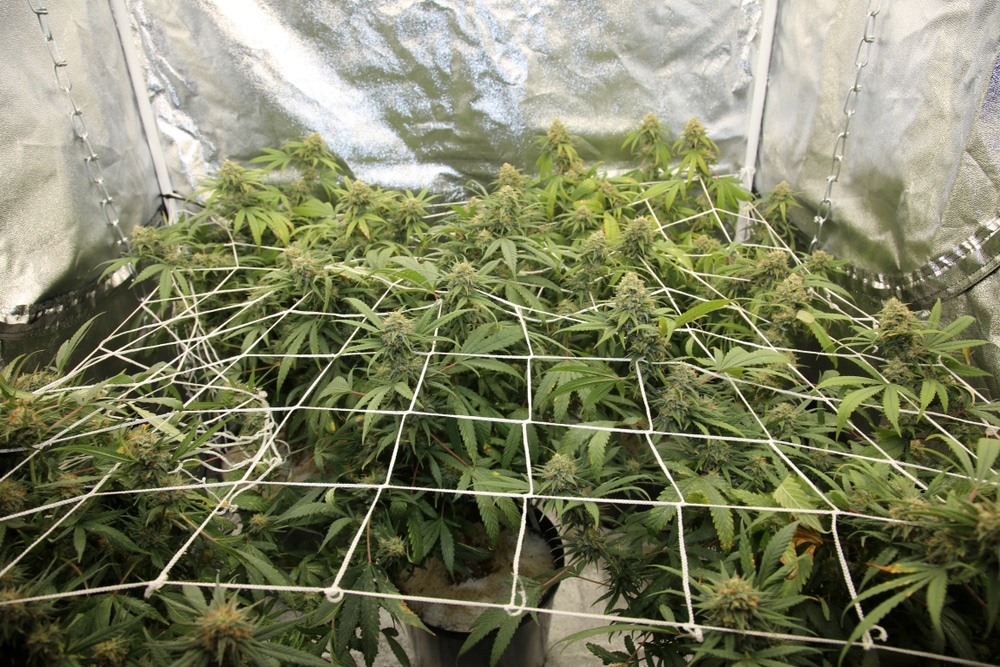
The Screen of Green technique maximizes yields from a few cannabis plants. By growing horizontally, the colas receive sufficient light for optimal bud production.
Other benefits of low-stress training for plants in the form of ScrOGing include:
- It’s easy to set up and maintain.
- It allows you to manage your crops’ height if your grow area lacks vertical space.
- It prevents heat stress by keeping plants at a distance from the grow lamps.
- The level canopy height makes maintenance easier.
- Improved airflow reduces the risk of mold and pests.
- The screen offers branches support so they don’t easily break under the buds’ weight.
Using the Screen of Green outdoors allows you to set up a stealthy operation. The process keeps your plants from growing too tall and attracting unwanted attention from passersby or neighbors.
How to set up a ScrOG system
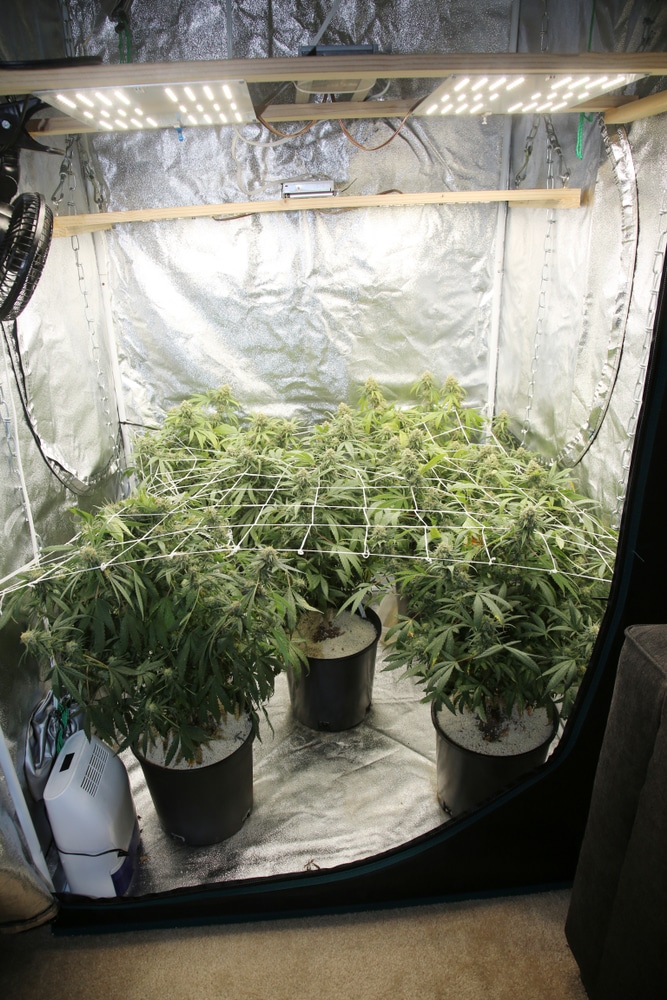
Setting up a ScrOG system is relatively straightforward. The process involves getting the basic marijuana growing supplies, installing the screen, and training your plants.
Materials and tools needed
Prepare a screen, a pair of scissors, and large pots for your setup. The most vital part of the system is the grid, which sits above your plants. You may use various materials, depending on your budget and design:
- Wire caging
- Nylon trellis netting
- Rope
Ensure the screen consists of two-inch squares and is sturdy, as it needs to support the heavy colas when they develop.
Keeping the Screen of Green in place is essential. Secure it to poles or mount it on legs. The former method is recommended as it leaves room below the canopy for maintenance and cleaning.
Installing the screen
Suspend the screen about 15 inches over your plants’ canopy, leaving between 20 and 25 inches above it for your grow lamps. Keep your crops lower if you have limited light emission to allow the illumination to cover all your plants evenly.
Training the plants
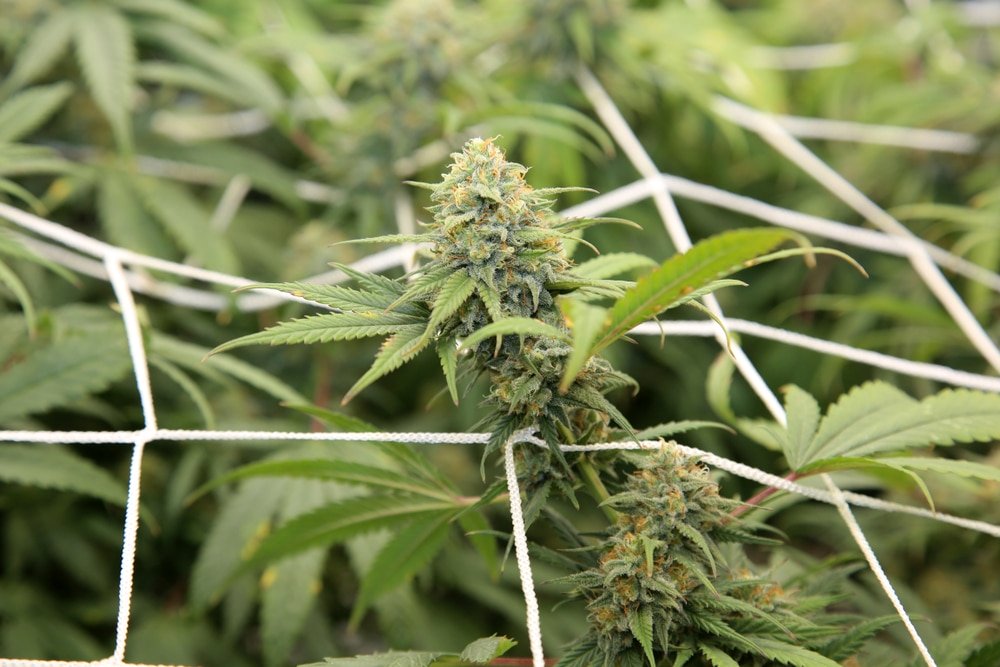
You may combine ScrOG with monster cropping, a training method that takes clones from flowering plants and reverts them to the vegetative stage. Using this technique, you enjoy continuous yields without needing a mother plant.
To train cannabis crops using the Screen of Green, top the highest node when your plants reach the grid to encourage sideways growth. Then, tuck the stems towards the holes away from the one directly above them.
As your crops develop, they should each have between 10 and 20 branches weaving through the screen. Don’t allow the stems to share a hole, as it could adversely affect airflow and light exposure.
Continue weaving the branches laterally while ensuring they’re stable to carry the weight of the developing dense colas. Use cable ties to secure them. If the stems are brittle and difficult to weave, carefully hook them to the screen, ensuring not to bend them.
Trim the lower stems when a canopy forms, as they won’t receive enough light. This action also allows your crops to focus energy on the upper bud sites to increase the Screen of Green yield per plant. Use sharp scissors to avoid injuring your crops. Clean and sterilize them before cutting.
How to get the most from ScrOGing
Choosing the best strains for a Screen of Green setup is vital to achieve maximum results. Sativa-dominant cultivars are ideal, as they stretch well and allow you to weave the branches without damaging them. Some strains to consider include:
The factors below also help you produce your desired outcome.
How often to water the plants
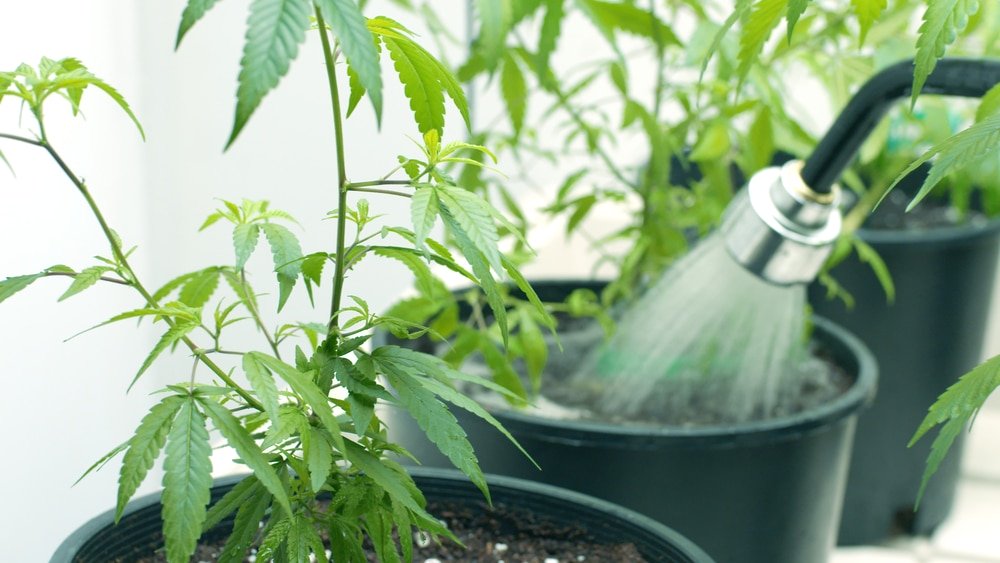
Hydration is critical for cannabis plants, but there’s no single answer for the ideal watering frequency. How often you water and how much you give your crops depends on the strain and its growth stage.
Use this method as a guide. Insert your finger into the soil up to about an inch deep. If it’s dry, it’s time to water. Another indication is when your pot feels light. Implement a feeding schedule to ensure your crops get what they need to grow into healthy bud-producing plants.
When using a ScrOG setup, water your plants each time you weave the branches to relieve the stress from the process.
How to prune the plants
If you have a tall weed plant, top it when it reaches the screen before weaving the branches to achieve a wide canopy. Ensure your plant is healthy enough before cutting the main stem, as the process might stunt its growth or kill it.
Next, trim the stems and leaves that don’t receive light, as they sap energy from the plant that the upper colas could use.
How to maintain the screen
Inspect the screen regularly to ensure it remains secure and sturdy to support the buds as they get heavier. Check that the netting’s position stays in place to allow the plants to enjoy maximum light exposure.
Troubleshooting ScrOG: Common problems and solutions
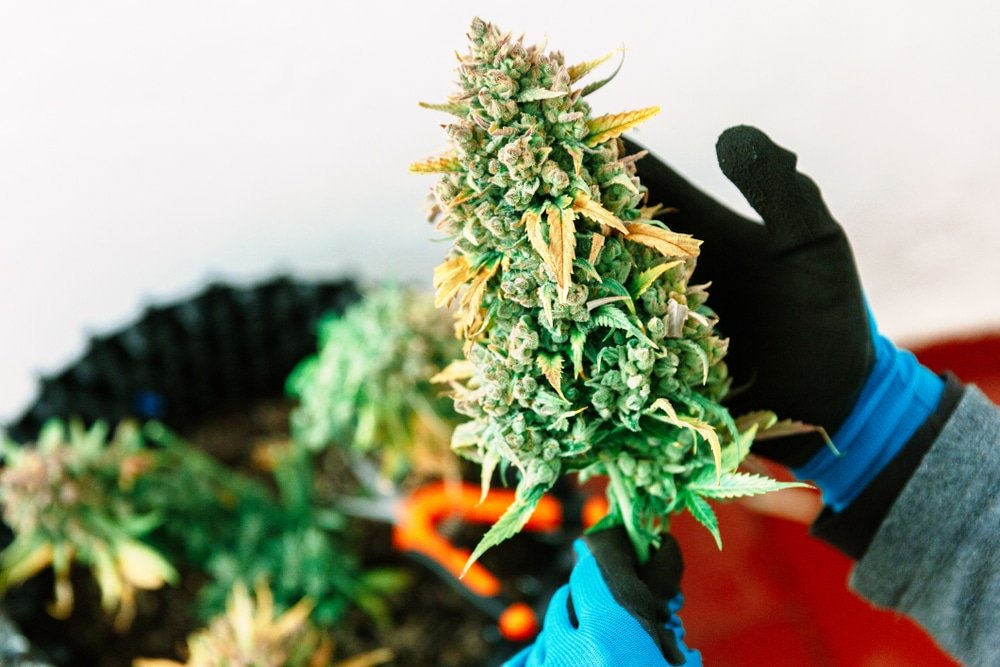
Although using a Screen of Green to grow cannabis is straightforward, there are some issues that could potentially affect your plants. Identifying problem symptoms early on allows you to take prompt remedial action to save your crops.
Below are some common afflictions your plants may face and how to solve them.
Nutrient burn
Don’t be overzealous when using fertilizers, as too much of a good thing may harm your crops. Nutrient burn results from applying a mix that’s too strong or frequent feeding.
When this happens, the cannabis leaf edges turn brown and appear burned. Stop providing food for at least a week to allow your plant to flush out the excess.
Light burn
While illumination is vital for robust growth, be careful of placing your indoor plant too close to the grow lamps. When your crop experiences light burn, its leaves turn yellow and show burn signs. Ensure your Screen of Green setup allows ample space between the canopy and bulbs.
Overwatering and underwatering
If you notice your plant’s leaves drooping, it’s a sign that it may lack hydration. Water it more frequently and watch the foliage rejuvenate.
Be careful not to go overboard and give your crop more liquid than it needs. A common overwatering symptom to look for is leaves curling downward.
Moisture build-up is a more severe problem, as it can cause root rot and inhibit your plant’s ability to absorb nutrients. Growth is adversely affected, resulting in lower yields. Worse, your plant may die, so immediately act to fix the overwatering problem before it causes more damage.
Plant diseases
Pathogens such as Botrytis cinerea, Pythium myriotylum, and Fusarium proliferatum could harm your plants. Growing disease-resilient marijuana strains may prevent infection, but always be on the lookout for sick crops and remove them immediately.
Other steps to protect your crops include maintaining a hygienic environment and controlling the temperature. Excess humidity is also a risk, but using a proper Screen of Green setup improves airflow and prevents moisture build-up.
pH imbalance
The optimal pH for cannabis growth is 5.8–6.2, so measure and maintain it throughout the crops’ life cycle. Levels outside that range can shock your plants and temporarily prevent them from absorbing nutrients.
Pests
Insects can harm and destroy your cannabis plant, so checking for infestation signs like blemishes on the leaves is vital. These symptoms appear before you see the pests.
Act immediately to remove the bugs before they spread to other plants. It’s best to take preventative steps to avoid the hassle of eliminating the problem. Applying foliar spray and introducing predators are two proactive methods.
ScrOG for maximum yields
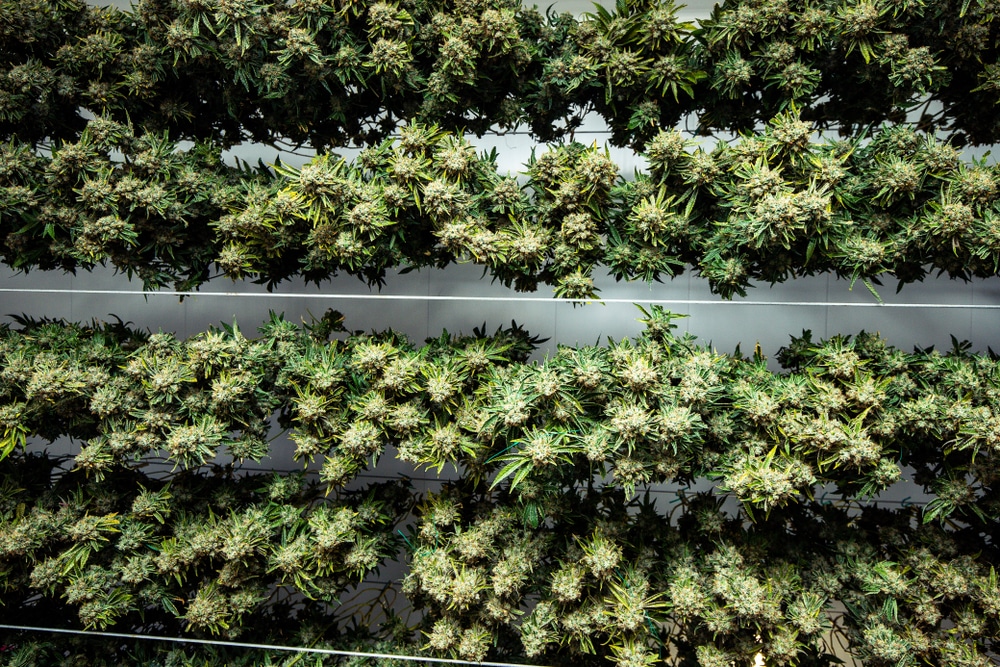
Incorporating the Screen of Green technique into your cannabis cultivation can be a game changer if you’re growing a limited number of plants.
This low-stress technique involves shifting your crops from developing vertically to expanding sideways. The lateral growth provides colas with optimal light exposure to produce dense buds.
Apply our tips to set up your ScrOG system and watch your yields explode. Buy high-quality marijuana seeds at The Seed Fair and kick off your growing journey with stable genetics and premium traits.


